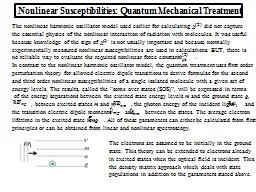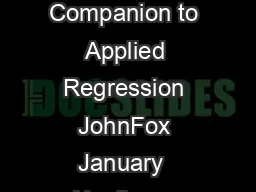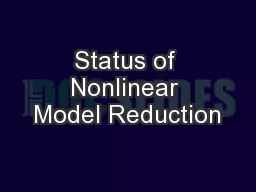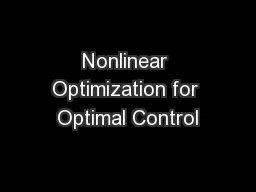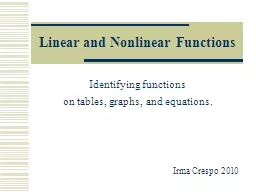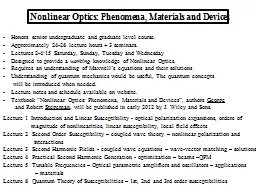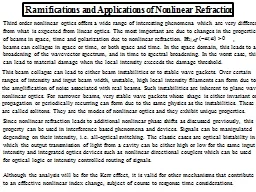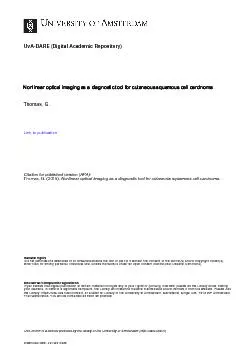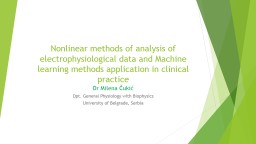PPT-Nonlinear Susceptibilities: Quantum Mechanical Treatment
Author : giovanna-bartolotta | Published Date : 2016-07-23
The nonlinear harmonic oscillator model used earlier for calculating 2 did not capture t he essential physics of the nonlinear interaction of radiation with molecules
Presentation Embed Code
Download Presentation
Download Presentation The PPT/PDF document "Nonlinear Susceptibilities: Quantum Mech..." is the property of its rightful owner. Permission is granted to download and print the materials on this website for personal, non-commercial use only, and to display it on your personal computer provided you do not modify the materials and that you retain all copyright notices contained in the materials. By downloading content from our website, you accept the terms of this agreement.
Nonlinear Susceptibilities: Quantum Mechanical Treatment: Transcript
Download Rules Of Document
"Nonlinear Susceptibilities: Quantum Mechanical Treatment"The content belongs to its owner. You may download and print it for personal use, without modification, and keep all copyright notices. By downloading, you agree to these terms.
Related Documents

